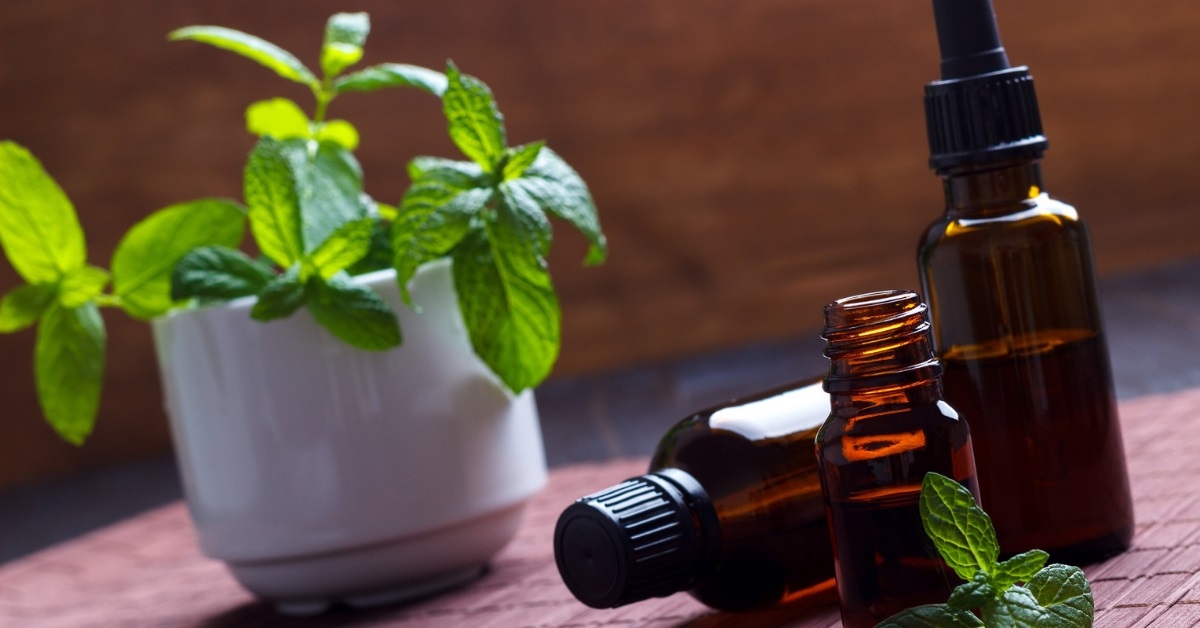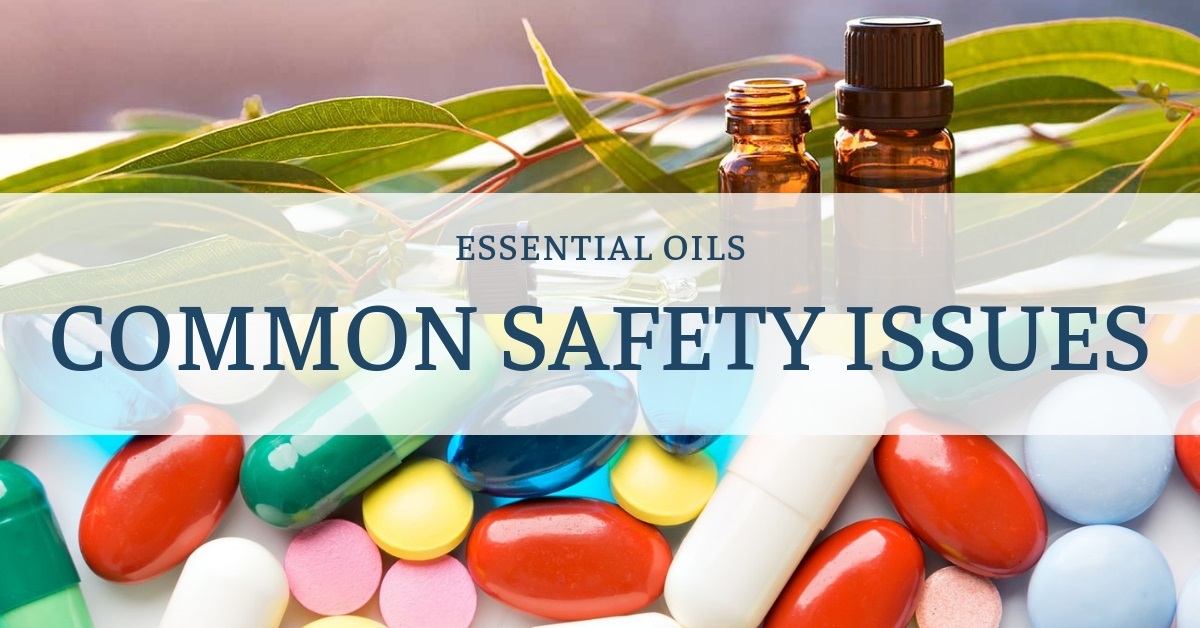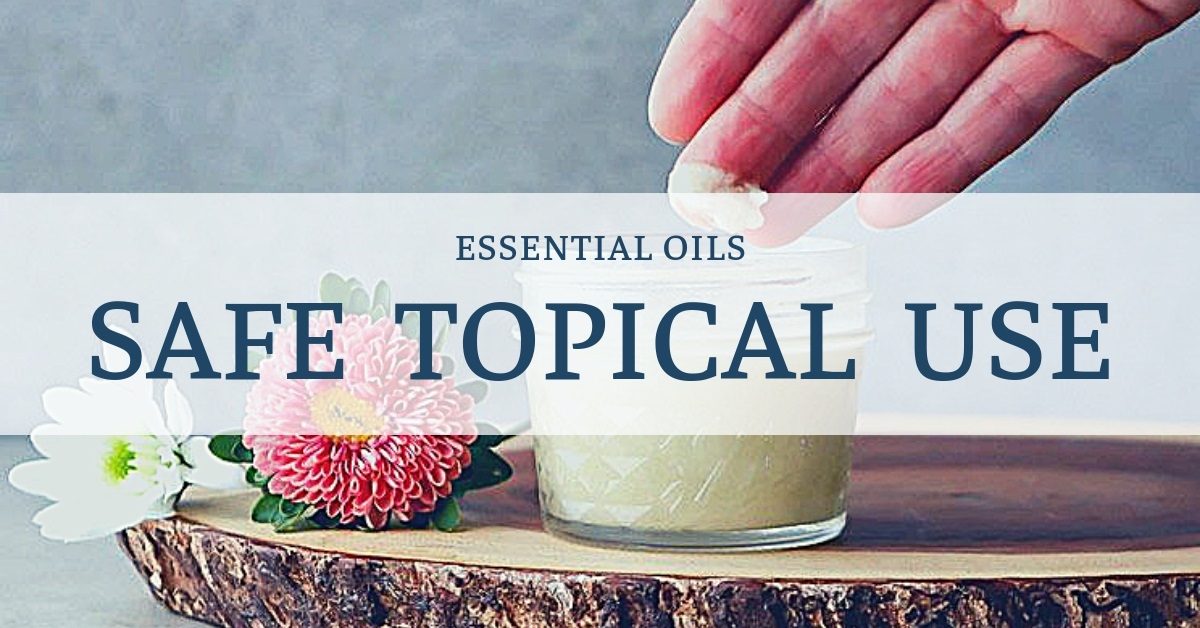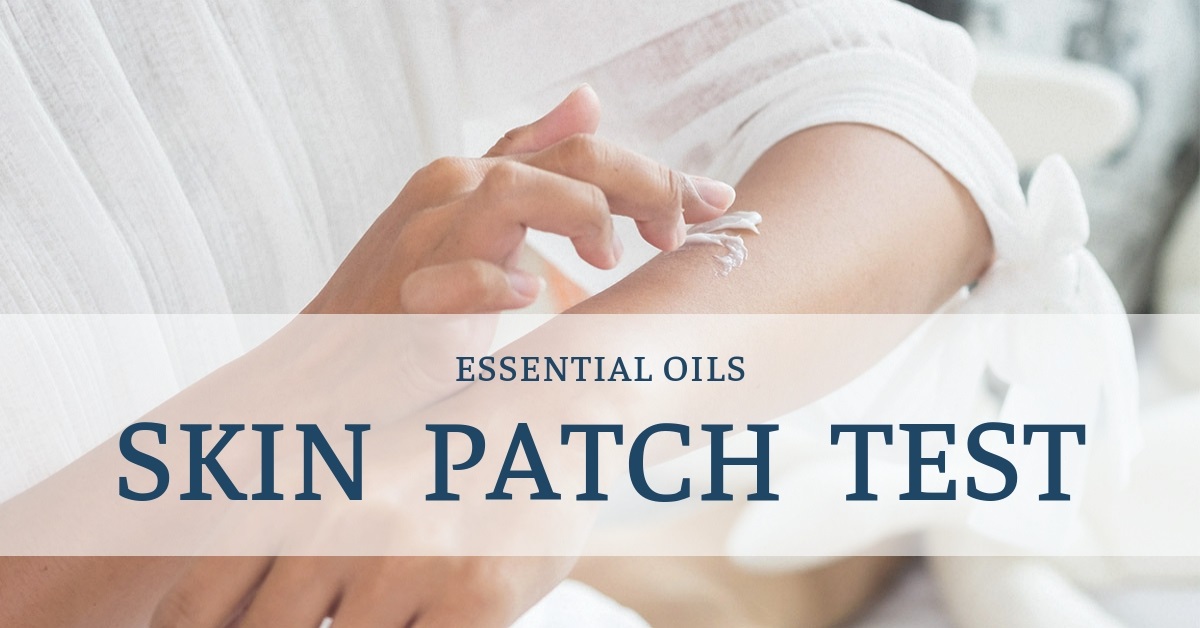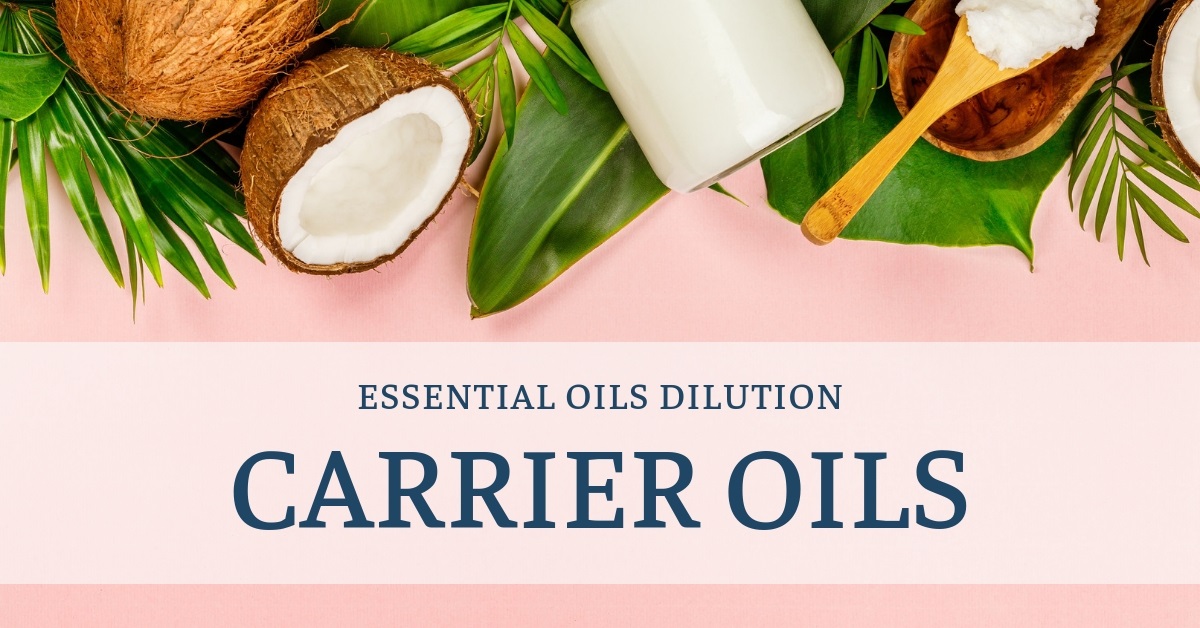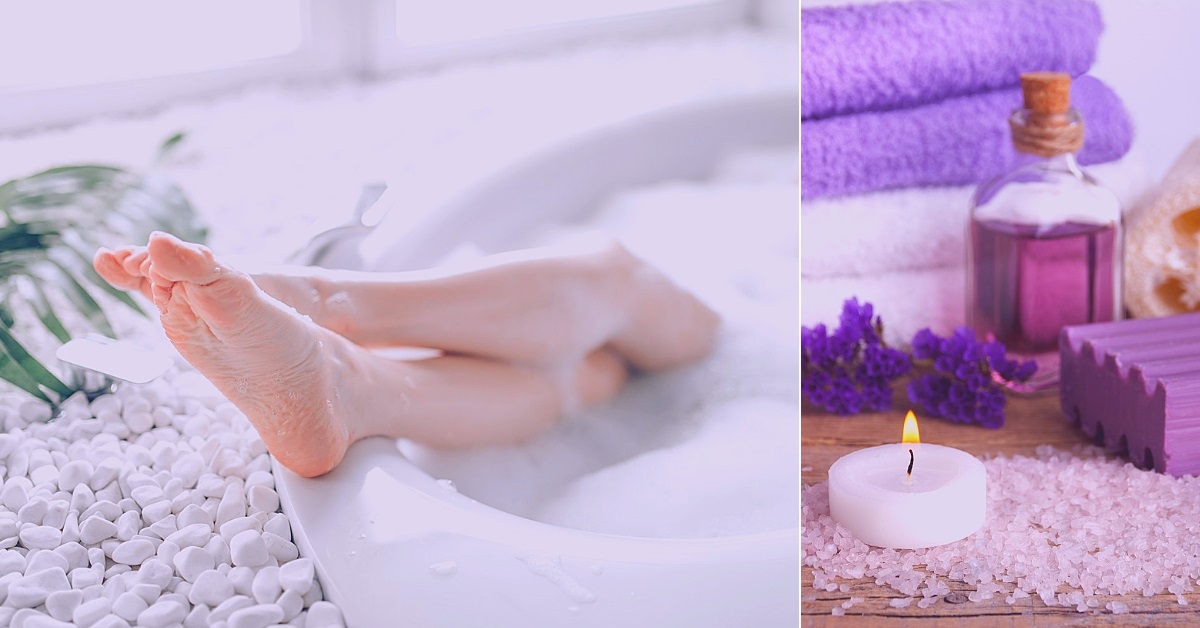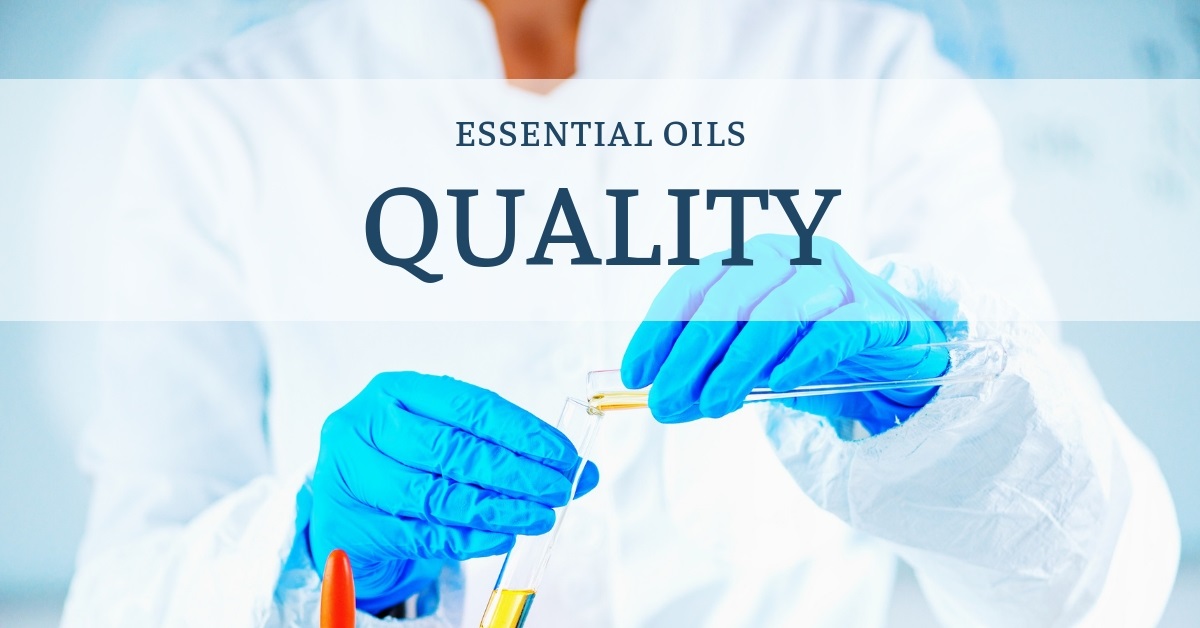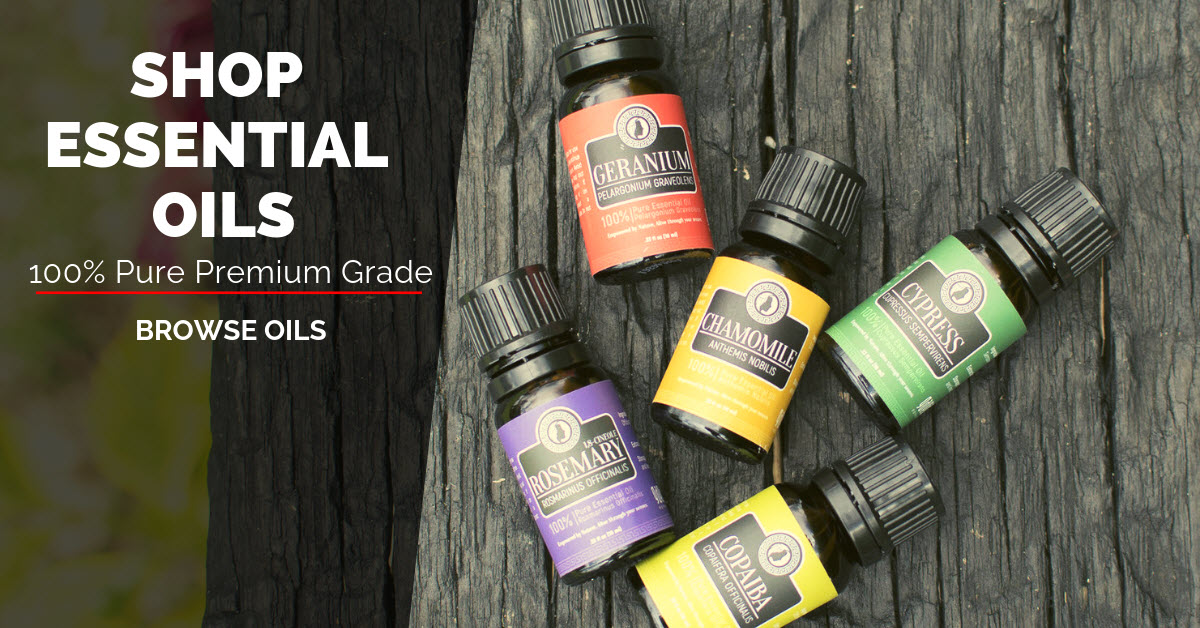One of the most common concerns people have about using essential oils is whether they are using them safely. It’s a contentious issue, and to some extent safety guidelines change the more you know about the oils, the person you are working with, any medications they are taking and their interactions, as well as the condition you are treating at the time
For example, whether a condition is acute or chronic, which would also influence how long someone is going to use the oils too.
Here though, we address the framework of safe usage for a beginner, how to use the oils confidently and in a well-informed manner.
To fully understand essential oil safety, one really needs to stop thinking about the oil as a liquid in a bottle and start thinking about how and why it got there in the first place, so let’s start with that, because when you understand how they came about, then safety makes a whole lot more sense.
Before you read any further I’m going to ask you to take a breath and read this page about what an essential oil is. This will give you context for why safety can be so complex.
Understand Your Oil
So, after that, my first piece of advice would be to ensure you understand all the actions an oil has before you use it.
Read the properties but then also read the contraindications too, to ensure you have not overlooked anything. Contraindications might be times you should or shouldn’t use the oil, certain medications or even diseases you are dealing with.
Common Safety Issues of Essential Oils
Remembering that essential oils influence the body, there is a checklist I always go through with the mantra “First do no harm”.
Do a quick check, are there any concerns with any of the following with the person you are using the oils on?
- Blood Pressure
- Epilepsy
- Pregnancy
- Neurotoxins
- Blood medications
Essential Oils & Blood Pressure
Clearly, when you relax your blood pressure starts to drop, so use essential oils carefully if you already have low blood pressure. You can always start off with much lower dilutions (say 1% perhaps) and work up if you don’t feel queasy.
Some oils that may have hypertensive actions (send your blood pressure up) are:
- Hyssop (Hyssopus officinalis)
- Rosemary (Rosmarinus officinalis)
- Sage (Salvia sclarea)
- Thyme (Thymus vulgaris)
It is sensible to avoid these if you already have high blood pressure. You can usually find another oil that can do what you wanted one of these to do.
That said, clary sage and ylang ylang are wonderful for reducing blood pressure, as is aromatherapy massage.
Essential Oils & Blood Medications
Some essential oils thin the blood which is a wonderfully healthy thing…unless you have a blood platelet condition, or you are on medications to do the same.
Wintergreen, for example, is a made up of almost one constituent methyl salicate, which is a fascinating chemical.
Recently scientists think they understand what it does in nature. It signals from one part of the plant to another that it has been injured in some way, presumably to ask it to do something else to make it more robust.
In humans it thins the blood and is many, many more times potent at doing that than aspirin. (It also mimics aspirins pain killing abilities too)
Now, wintergreen is a particular concern because it lurks unseen in lots of pain killing products anyway. If grandad has a liniment that has a kind of herbal mintiness, it stands a chance there is some wintergreen in. What we don’t want to do is add more. So, watch for wintergreen carefully.
Other essential oils to watch for here are:
- Bay (Pimenta racemose)
- Cinnamon Leaf (Cinnamomum verum)
- Clove Bud (Cinnamomum verum)
- Holy Basil (Ocimum sanctum)
- Patchouli (Pogostemon cablin)
- Tarragon (Artemisia dracunculus)
- Wintergreen (Gaultheria yunnanensis)
Essential Oils & Epilepsy
Epilepsy is a complicated one because it can have so many triggers. Approach using new essential oils carefully, to be doubly reassured. Rather than a skin test, here I would recommend simply wafting the oil under your nose every five minutes or so for about an hour, just to check your body is happy with it.
Many oils such as our friend spikenard (Nardostachys jatamansi), rose otto (Rosa damascena) and lavender (Lavandula angustifolia) are wonderful friends to epilepsy, and can make remarkable differences to a sufferer’s life.
Most of the oils we would advise to avoid are high in levels of a chemical group called ketones. In the right situations, ketones are marvellous things which break down blockages; very useful for scar tissue, nasal and chest congestion, for example.
But ketones are pervasive and can be too harsh for people with epilepsy.
Oils to avoid are:
- Rosemary (Rosmarinus officinalis) (Some therapists have had success with epilepsy here, so use your own judgement but it’s one I always avoid.)
- Fennel (Fœniculum vulgare)
- Sage (Salvia officinalis)
- Hyssop (Hyssopus officinalis)
- Camphor (Cinnamomum camphora)
- Spike lavender (Lavendula latifolia)
You’ll note that there are two different lavenders here: angustifolia is lovely for epilepsy, latifolia is not and again, this is down the high ketone content in the spike variety.
Essential Oils & Psychosis
People with schizophrenia and any other delusional or psychotic conditions should also avoid the same oils as the epilepsy list, again because of the neurotoxic issues concerned with ketones.
Essential Oils & Diabetes
For the most part essential oils are wonderful for diabetes, since by calming the stress in someone’s life it helps them to manage their condition better. However, I would suggest using the oils listed in the epilepsy section with care, again because of the high levels of ketones. Angelica root (Angelica archangelica) too, should be avoided.
Essential Oils & Pregnancy
This deserves an article in its own right so I shall summarize here.
Avoid ALL essential oils during the first 16 weeks of pregnancy.
Safe only after 37 weeks:
- Rose (Rosa damascene)
- Clary sage (Salvia sclarea)**
- Jasmine (Jasminum officinale)
- Myrrh (Commiphora myrra)
**Since using clary sage incorrectly can actually stop labor in its tracks, I would avoid using until full term labor has been confirmed by a midwife.
Do not use the following oils topically in any eventuality during pregnancy
- Angelica (Root and Seed) (Angelica archangelica)
- Basil (Sweet) (Ocimum basilicum)
- Basil (Holy) (Ocimum sanctum)
- Black Pepper (Piper nigrum)
- Cassia also sometimes labelled as Cinnamon bark (Cinnamomum cassia)
- Clove (Syzygium aromanticum)
- Cypress (Cupressus semperivens)
- Ginger (Zingiber officinale)
- Helichrysum (Helichrysum italicum)
- Lemongrass (Cymbopogun citratus)
- Marjoram (>Origanum majora)
- Myrrh (Commiphora myrrha)
- Nutmeg (Myristica fragrans)
- Oregano (Origanum vulgare)
- Peppermint (Mentha piperata)
- Roman Chamomile (Anthemis vulgare)
- Rosemary (Rosmarinus officinale)
- Thyme (Thymus vulgare)
- Vetiver (Vetiveria zizanoides)
- White Fir (Albies alba)
- Wintergreen (Gaultheria yunnanensis)
Consider the Time Of Day
While using at a certain time of day wouldn’t necessarily be a safety issue as such, always take it into consideration.
Do you want to pacify and calm first thing in the morning? Maybe, but probably not. It might be you want to stabilize them with something like Lemon Balm (Melissa officinalis) or ground them with Vetiver rather than sending them off to sleep with lavender or valerian (Valeriana officinalis).
More pertinently, do you want to use peppermint just before bed when you understand that its primary action is to stimulate the mind? Bed time peppermint is hours of tossing and turning guaranteed.
Always remember to go through all the main effects in your mind before you start using an oil. A sleepless night is a very painful thing!
Safe Topical Use of Essential Oils – Dilution
Ok so we have picked our oil.
Now we want to work out what to do with it.
Of course, we might just inhale it, or we might want to use it on the skin.
To do this we need to dilute it, somehow.
The easiest way is with carrier oils, but it we can also add essential oils into creams and lotions and into salt to make rubs and bath salts.
Now, we have established these are chemicals and some of them are very acidic. Remember some of the constituents are literally designed to “Steer clear or I’ll hurt you” in another language. So, we approach them with care, and we always protect both our skin and our essential oil supply because this saves both and money!
Maximum Dilutions for most oils.
As a general rule, we say:
- Adults 3%
- Elderly or in a weakened state 2%
- Children over 6 months 1%
- During pregnancy 1%
If you are considering using on children, I’ve created a separate set of guidelines and considerations, as well as pregnancy. So,
Broken Skin
Never use essential oils on broken skin, although since the oils can travel around the body well, feel free to use them near to the cut. Often though, hydrosols are a better choice.
How Do We Know How Much Essential Oil To Use?
Well I’ll let you into a secret. It’s a hell of a lot easier using metric than imperial!
When I first released my book I was inundated with emails saying how do you calculate how many drops. I’ll confess to wondering what on Earth people had learned at school because I found it so very simple. Then I realized it was the measures people were using.
They key is to think in teaspoons of oil.
A teaspoon measures 5ml.
1ml of oil is 20 drops. (Roughly, depending on the viscosity of the oil, but its near enough to rely on it)
1 teaspoon is 5(ml) x 20 = 100 drops of carrier oil.
100 drop x 1% is 1 drop
100 drops x 3% is 3 drops
This means for an adult dose 3 drops in a teaspoon, but just one for a kid.
Easy!
There are a couple of puzzling things though.
Firstly, not all oils are maximum dilution of 3% because they are hot and unpredictable.
You’d certainly regret using cinnamon leaf at 3% for example.
Maximum dilution for cinnamon is 1.1% so what do we do now?
Use less.
(BTW These unusual maximum dilution oils are in my free book if you can’t find them on the internet easily. They are taken from the official safety guidelines book that we use in aromatherapy Essential Oil Safety for Professionals – Tisserand and Young 2013)
The term “maximum dilution” means exactly that…it’s the maximum you can use.
To a certain extent it is a moot term, because it is drawn data about from the minimum dose it takes to kill a rat! So, it’s a guideline, nothing more.
And some of these oils are very expensive things so I always encourage my students and patients to use less oil than you think.
Calculate what 3% is for an adult and start off with less, then you know how high you can go, if you are not getting the results you want. For the most part, at 1% …you will.
One last thing, this is 3% dilution of each oil so if you have three oils in a blend, you can use three drops of each oil in the teaspoon.
Is it Safe To Use Essential Oil Undiluted or Neat?
Now, this is a contentious issue.
Many websites will tell you that lavender and tea tree can be used neat safely, and they are right…but as ever there is a “but…”
Sensitization can occur if your body has too much exposure to an oil.
So, here is the dilemma.
Tea tree essential oil is antiviral, antibacterial and antifungal.
Read it again…
Antiviral, antibacterial and antifungal…
That’s the three main protagonists of disease.
In essence, if you have a viral illness, one that bacteria or a fungus, tea tree can begin to fight it for you.
That’s pretty much your first aid kit set for life, right?
Whatever comes to get ya, you’ve got something to zap it.
Well, yes. And in fact, in a petri dish it kills e-coli, streptococcus, staphylococcus and even MRSA, so this is a tremendous oil.
What you really don’t want to do is take the chance your body will begin to reject it, by throwing up skin reactions, headaches or breathing problems just because it thinks you are using too much.
By using them neat on the skin (on a regular basis) you risk jeopardizing one of the best nursing relationships your body ever had.
So, just don’t do it.
That said, if you burn yourself, the absolute best thing you can do (after you have run it under cold water for a few minutes) is pour neat lavender oil all over it. Not only will it heal the skin, take the heat out and soothe the pain but it will deal with the shock too. (The same applies to using Helichrysum italicum and rosehip carrier – extraordinary burn healing capacities.)
Skin Patch Tests
Now, this a very trendy piece of advice that I only partly agree with.
Yes, you need to check your body likes an oil, but if you developed shingles, you really don’t want to wait 24 hours looking to make sure you can use the mandarin oil to start to reduce the itching.
That’s daft.
Skin patches work in hair dressing, but they don’t really work in the context of emergency medicine.
We are going back to the original statement.
Get to know your oils.
Do you like the smell? Oddly, if you don’t like the smell, then just don’t use it because you are likely picking up some kind of caterpillar warning! As you start to use the oils more, you’ll also realize one day you like it, the next day you don’t. That’s a good barometer of what you need that day.
When you buy the bottle of oil, or better still when you stand in front of an essential oil dealers stand at an exhibition, get some on your skin. How does it interact with a carrier? Does your skin like it? How does it make you feel as you perceive the aroma?
Don’t wait till the emergency happens and then skin test… interact with your oils as soon as you get them.
Try to hear the messages they teach you, because you’ll soon develop what I call my clique. The set of my liquid best friends whom I can rely upon to get me out of any fix.
You’ll do the same and that’s better than any skin test can ever be.
How To Deal With a Skin Reaction
If you have been paying attention you’ll, have likely started to wonder if there will be some oils that you just don’t like and who really don’t like you.
Definitely!
Let me tell you, that rosemary and I keep our distance. Peppermint and I don’t speak, and I really don’t trust cinnamon.
But that’s just me.
There is good reason for cinnamon though, because a few years ago someone gave me a very expensive gift of a beautiful massage candle that has been badly designed.
It smelled amazing and so I poured the soy liberally onto my skin after my warm bath. Moments later, there was this dreadful burning on my neck and travelling all over my body… The designer had used far too much cinnamon for my already warm skin.
Clearly, she had blended by fragrance that was stunning, but it was way too fierce for topical use.
So…what do we do then?
Resist the temptation to wash.
OIL AND WATER DON’T MIX
All that happens is the product spreads.
Instead, ADD MORE CARRIER.
And because we need fat, you can use olive oil or yogurt or even double cream if that’s all you have at hand.
Then use a 2% dilution of lavender or Roman Chamomile to calm down the inflammation.
Essential Oils & Phototoxicity
You may notice that some of the pages on this site tell you to be careful going out into bright sunlight after using an oil.
Usually, but not always this will be because it comes from a citrus oil. These are not extracted by distillation, but rather pressed from the rind of the fruit. Some of the chemical constituents are very reactive to light and can make your skin blotchy or itchy.
Bergamot in particular is prone to this on some skins.
For the most part, these oils work on the emotional body to bring about healing. So, if you are worried, simply don’t use them topically in the day. Instead, inhale their sunshine magic, after all they have proven there is light enough without adding more.
If you do need to use topically for some reason, night time is a safe and gentle healing space.
Carrier Oils
Just a quick note, because these deserve their own post, but the very best way to dilute essential oils is in carrier oils. Usually more correctly termed as fixed oils these are usually cold pressed from seeds etc or other carrier oils might be infused or macerated from botanicals too.
Please don’t underestimate these beautiful products that will add subtly to and nuance to your healing. They are a whole new area of research, with their own properties and qualities. Often, they can enhance or even replace essential oils to give a gentler but more profound effect.
The moment you consider these are simple ways to stop hurting your skin, is the moment your healing potential begins to fall apart.
These are a very important and useful ally. Use them wisely.
Diluting Essential Oils for the Bath
I have always used a few drops directly into the bath and providing I don’t choose an oil which is a dermal irritant I’ve never had any problems.
Except…since oil and water don’t mix, the oils sit on the top of the water and don’t disperse as well as they could.
Adding 5 drops of essential oil to a teaspoon of milk diffuses the oils far better into the water.
Do not dilute into carrier oils for the bath.
It is correct in theory, but the result becomes a safety issue.
You either slip over in the bath or you strain your back trying to clean off the gunk from round the sides later! It’s a fool’s game.
Diffusing Essential Oils Safety
Depending on how you are diffusing your oils, there may be safety issues.
- Not everyone responds well to every oil. Diffusing an oil in an area with many people in is a safety problem as your favorite oil could cause seizures in others and headaches in another group too. Personal inhaler sticks are wonderful to keeping your fragrance for you and you only.
- If you go old school, like me, with a candle under warm water, then you can diffuse as long as you like.
- Electronic diffusers, though, are very strong.
- Turn the devise off after 2 hours and rest for 30 minutes to give your nose and senses a break. No need to stick rigidly to the rule but pausing for a while prevents headaches and other signs of sensitization.
- Do not leave candle diffusers on at night or in the reach of tiny hands. It’s a fire hazard waiting to happen
Ingestion Of Essential Oils
The most contentious issue of them all.
And, after almost 30 years using the oils and working with some of the best aromatherapists in the world, I’m still undecided on the issue of should we / shouldn’t we.
I do cook with oils.
A lovely therapist called Madeleine Kerkoff who is an expert in CO2 extracted oils, sent me a Cinnamon oil to cook with. She advised me to use just one drop in an orange sauce to go with Chocolate Pudding (she knows me well!) and she was right, it was extraordinary.
Cinnamon is a spice, so naturally it is edible just as herbs like rosemary and basil are safe to ingest in small amounts.
Less obvious, is Vetiver, an oil made from grass roots usually from Haiti. I use that to make rose petal and vetiver ice cream and it is a tiny slice of Heaven, but it’s just one solitary drop. Any more than that is overwhelming.
It’s the potency of the essential oil that makes it problematic, not least because they taste like the Devil’s armpit! I once experimented and used tea tree internally to combat a stomach bug It tasted dreadful, and the burping up tea tree was worse than the being sick.
Oils taste dreadful going in and coming out.
That should be enough to put you off, but there is more.
Ingestion and the Liver
Remember how these chemicals are secondary metabolites? Well, if you ingest them, they don’t really do anything until they hit the liver where they are metabolised again. In other words, the chemicals change. So, here we might start to worry they might start to act in unpredictable ways.
I’m a traditional kind of gal. Unpredictable worries me.
But think about that for the moment. They go through the digestive tract to be extracted. Do they go directly into the blood to be circulated?
No.
But with topical use, they do.
Do they encounter the lungs?
Nope.
So, ingestion is useless for respiratory complaints.
Topical, inhalation or even using essential oils in a suppository is going to be better for this too.
Does it affect the mind and emotions…you can guess the answer and I hope you are getting the gist.
Next, remember what I said earlier about washing skin reactions?
Oil and water don’t mix, right?
Simple physics.
So, if we throw four drops of cinnamon oil onto some water to help protect us against a sore throat, is that a good plan?
On paper it is, yes, because it is a fantastically act- bacterial oil that very few organisms can argue with.
In practice though, the water does nothing to dilute the oil. It smears an irritant over an already painful area and to all intents and purposes sets light to an inferno in your throat.
Well played, Einstein!
If you must do it, then ingestion must always be into a carrier, whether that be carrier oil, honey or vodka, and only in tiny amounts. Capsules are wonderful for this too.
One drop of cinnamon in honey is entirely scrumptious and will do you nothing but good.
However, please consider the amount of resources that went into the oil.
Making essential oil is incredibly costly to the planet, and often is a bit like taking a sledge hammer to crack a nut. You have cheaper and more efficient ways at your disposal. If you have a jar of ground cinnamon in the spice rack, all the same chemicals are in there, plus a few hundred more. Always use the real spice or herb as first choice.
I’m sorry to tell you that ingestion of essential oils in a glass of water is a marketing ploy to get you to finish your bottle quicker…not very much more
Just as an aside, you might be interested to know that in the UK, despite being qualified for as long as I have, being the author of 20 essential oil research manuals and an overseas speaker for several organisations… Even I can’t get insurance to use essential oils internally.
And I am comfortable with that.
Because I genuinely believe that topical and aromatic use of the oils are better. Read more about ingesting essential oils here.
What to Do if Your Child Drinks from an Essential Oil Bottle
Give him a drink of milk, in the hope that it dilutes it.
Grab child, the glass that the milk was in and the essential oil bottle and get him to the emergency room as fast as possible.
Use the trip to try to remember how much was in the bottle before the encounter. Knowing how much he has drunk will be vital. If you know how heavy your child is too, it will hep in the safety calculations.
Show your physician the oil so he can look up the safety guidelines in his manual, then the glass, to see how much it has been diluted.
What Do You Do if You Get Essential Oils in Your Eyes
This often happens to me because I rub my tired eyes after working.
Same as the other accidents, make a compress with some carrier oil so it dilutes it.
Then when I am happy all the oil has gone, I spritz with some rose hydrosol to calm the burning.
If you have no rosewater, a simple water rinse will do, but always remember carrier oil first.
If it is really bad…emergency room again, I’m afraid.
Tampon Burns
Oh yes.
It’s a thing!
It results from listening to internet gurus tell you to put neat tea tree oil on a tampon to get rid of thrush.
I don’t know who I hated more. The person that put the idea in my head or me for trying it when I should know better.
Tea tree can be irritant to the mucous membranes, which ask any post-menopausal woman, is what in your vagina is a great membrane to have.
And yes, tea tree irritates it…a lot. I assure you.
Look away, gentlemen please….
Shove some solid coconut oil up gals… the burning will finally subside.
Yogurt, ladies.
Yogurt + tea tree is a better plan.
Essential Oil Quality
A little note on quality, from a safety point of view.
The demand for essential oils has grown exponentially in recent years and with it that brings good and bad. For me as a writer, that is marvelous because it is more people to read my books but from a therapist’s perspective it’s not so great.
Over 1% of the planet’s agricultural land is now given over to the production of Essential Oils (and I have to say when people are starving I find that abhorrent). Luckily, nowadays, there is a push for these communities to raise it as a sustainable commodity to help them out.
As a marketplace, the essential oils trade can be a dark and scary place.
It’s not unusual for armed men to turn up to producers with suitcases of bank notes to persuade them to sell their entire crop. I wish I could tell you that I’m a strong enough person that don’t think I’d succumb to those kinds of tactics and be persuaded to sell, but I can’t.
Truth be told, I am not sure that many people are.
Consequently, often there is not enough oil from a certain species to go around all the suppliers who want it.
When that happens, prices go up and producers then need to cut corners to meet the growing demand. They harvest too early. They don’t store plant matter for long enough. They distill, too fast and too hot or perhaps adulterate with other oils.
And it happens a lot.
You will never be a 100% sure you have a completely perfect oil, unless you have distilled it yourself (and trust me, that’s not as easy a it sounds!) but there are a couple of pieces of advice I can give you to help you get better oils.
Ask to see a GC/MS report.
Gas Chromatography and Mass Spectrometry readings are not as scary as they sound. Any supplier should allow you to see it if you ask.
They show what the principle constituents are in each oil.
Then what I do is go to a data base on the Essential Oil University website and compare what my oil should look like. Keep in your mind that where a plant has grown will affect its chemistry and so a Helichrysum from Croatia looks starkly different from one grown in Corsica, but it gives you, at least, an idea.
It’s not unusual to see slight differences from crop to crop but you should be able to see some correlation between the two.
More important, though is to develop a relationship with a supplier.
This is far more effective than shopping around for prices.
Think about how their business model works. Do they seem passionate about making money or about sharing their oils?
Listen to them.
Examine their ethics and see how they match up with yours.
Intuition is everything with essential oils. Use yours. Do your research. Ask around on social media.
Personally, I love oils that have been made in small batches by artisan distillers. Copper alembics create the very best oils, in my opinion.
Organic is wonderful, but very difficult to maintain. Often a wild harvested oil will be just as magical to use.
Check your labels have Latin names and country of origin on them. Think back to the importance if knowing which lavender an epilepsy sufferer is using. It may sound like essential oil snobbery, but choosing the correct chemotype is absolutely key for safety.
What is the Shelf Life of an Essential Oil?
Just like any other living organism, essential oils begin to fade away. Eventually they become life extinct.
I find it hard to put exact dates on this because some, like Patchouli, are like fine wines growing more wonderful with every year that passes. I have some oils in my box that should have been thrown away years ago, but I still love them and they treat me well.
Citrus oil though, are more problematic.
High in a deliciously uplifting chemical group, monoterpenes, citruses oxidise very quickly. Throw them away after about 2 years, otherwise you run the risk of skin sensitivity. Most other oils stay in my box about 5 years.
Essential Oils Storage tips
Oils like to be in cool dark places.
That said, I have a fair few in my bathroom for obvious reasons, where it gets very warm indeed. These don’t last as long as the ones I have taken better care of, but equally, they get used up faster because they are easily at hand.
Bear in mind, too that I live in England where it is cool and moist most of the year. If you live in the desert, then it might be a plan to get a special refrigerator for yours. It will save you money and potential skin issues in the future because it will keep the molecules stable for longer.
For goodness sake, keep them out of the way of kids, because they are fascinating to little fingers.
To all intents and purposes consider them in the same way as you do as pills and other chemicals. If they drink them, they can do the same damage.
God forbid that does happen, but if it does at least, now, you know what to do. More on storing essential oils properly here.
What Happens If You Don’t Follow Guidelines
Well, you know what?
Potentially nothing.
And let’s be clear, aromatherapy has grown by people pushing the boundaries and learning something new each time.
But most of these safety guidelines have come about because one of us has done something wrong and regretted it. I’d hate the same to happen to you. Stick to the guidelines and leave the leaps of faith to those who know what they are doing.
That’s what I do anyway!
Read Next:

